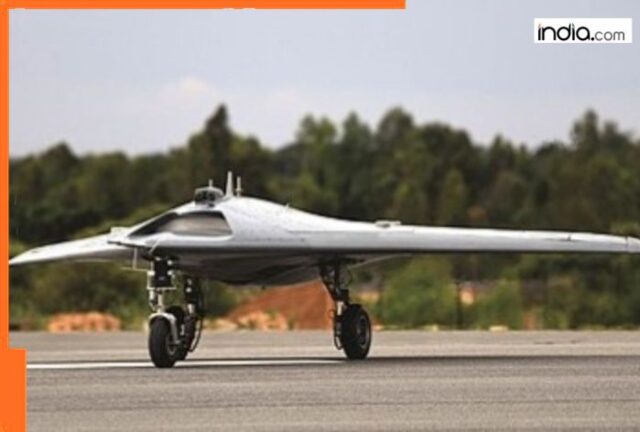The Ghatak UCAV unmanned stealth bomber, which is being developed by India’s DRDO for the Indian Air Force (IAF), is a 13-ton UCAV which will have advanced features, including a Digital Beamforming (DBF) system.
Ghatak UCAV: In a major cause of worry for New Delhi’s rivals, especially Pakistan, China, and more recently Bangladesh, India is developing its indigenously built Ghatak Unmanned Combat Aerial Vehicle (UCAV) stealth bomber, which will mark a significant leap ahead in the country’s defence capabilities, specifically aerial offence and defence missions.
How powerful is India’s Ghatak UCAV stealth bomber?
The Ghatak unmanned stealth bomber, which is being developed by Aeronautical Development Establishment (ADE) of India’s Defence Research and Development Organisation (DRDO) for the Indian Air Force (IAF), is a 13-ton UCAV which will have advanced features, including a Digital Beamforming (DBF) system, a cutting-edge technology used to boost the effectiveness and precision of radar and communication systems, according to defence website, Indian Defence Research Wing (Idrw).
What is DBF?
An advanced signal processing method used in radar, communication, and electronic warfare systems, Digital Beamforming (DBF) enables precise shaping, steering, and focusing of radar or communication signals electronically, removing the need for mechanical intervention of having to move the antennas to achieve that level of precision.
Digital Beamforming (DBF) is an advanced signal processing technique used in radar, communication, and electronic warfare systems. It enables the precise shaping, steering, and focusing of radar or communication signals electronically, without the need for mechanically moving antennas.
DBF does not rely on fixed or mechanically steered antenna arrays, allowing real-time control real-time control over direction and shape of multiple beams simultaneously, a feature which offers significant flexibility, efficiency, and accuracy to the systems which use this technology.
The DBF system is capable of digitally steering the radar signal beam with having to physically move the antenna, allowing for fast scanning, high resolution, and the ability to track multiple targets simultaneously.
Additionally, the ability to focus signals in specific directions significantly reduces the radar cross-section of the UCAV, enhancing its stealth capabilities by minimizing detection from enemy radars.
How DBF enhances Ghatak UCAV’s capabilities
The Ghatak UCAV, which will incorporate the DBF system, can use the technology for synthetic aperture radar (SAR) imaging to capture high-res ground images on recon or intelligence gathering missions, and also use it assess damage after a strike. Ghatak’s DBF-enhanced radar can detect and track targets with pin point accuracy at long ranges, including slow-moving or stationary targets, which traditional radars often fail to detect.
The DBF tech also enhances the stealth capabilities of the Ghatak UCAV reducing its chances of detection by enemy radar systems.
Additionally, the DBF system gives Ghatak precision control over electromagnetic emissions, enabling the stealthy UCAV to conducted sophisticated electronic warfare missions, including the ability to selectively jam enemy radars or communications, preventing detection from enemy forces.
The DBF aboard Ghatak allows the UCAV to seamlessly switch between different radar modes like ground mapping, air-to-air combat, or maritime surveillance, enhancing its versatility for various types of missions.

















































